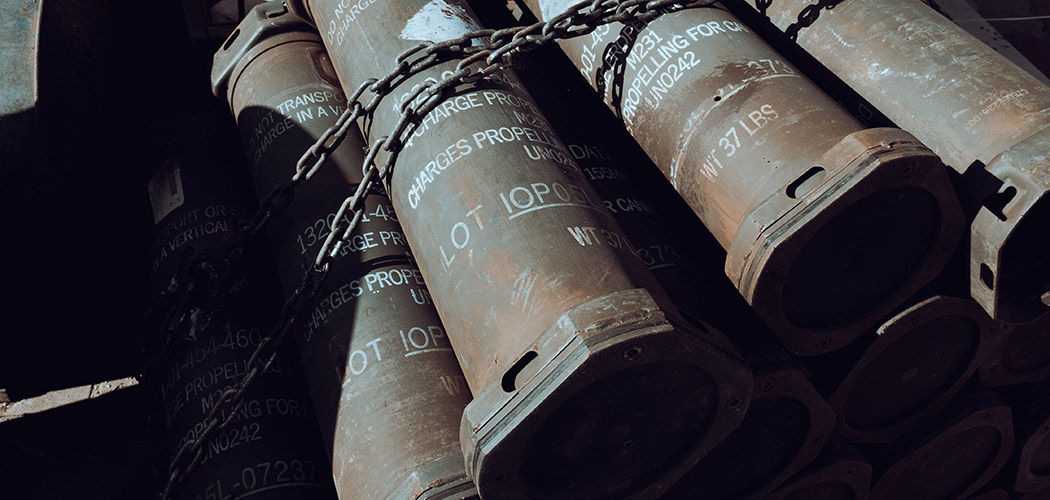By Bill Carson | May 23, 2023
The Harpoon missile is an all-weather, over-the-horizon, anti-ship missile that can be launched from a variety of locations. It was designed for application in the Navy, with its goal to be a basic anti-ship missile for fleet-wide use. Its role was expanded when it was adapted for use in the Air Force and adopted by over 29 foreign military partners.
Keep reading to learn about Harpoon missile systems, including their history, specifications, benefits, components, and beyond.

In 1965, the U.S. Navy began the development of a missile that was designed to target surfaced submarines. The Navy would often refer to submarines as “whales,” which is where the name for the Harpoon missile originated.
The final product was introduced in 1977 – an all-weather, over-the-horizon, anti-ship missile that the Navy uses for air and ship launches. It was known as model A/R/UGM-84. Over the years, these Harpoon missiles received many upgrades to their functionality and software. In 1998, the Block II version of the Harpoon missile was released and is still available today and ready to take on anti-ship missions.
With the developments and upgrades made, the Harpoon missile system is capable of striking targets more than 80 miles away, using both inertial guidance and active radar homing. It carries a 500-pound blast warhead that is powered by a lightweight turbojet and is capable of delivering lethal firepower against threats.
This system is equipped with the following characteristics that have contributed to its success since its inception:
The Harpoon missile has remarkable qualities and impressive versatility, which is why it is considered one of the most successful anti-ship systems. As an example of this versatility, Harpoon missile launchers can be used on surface ships, submarines, coastal defense batteries, or even fixed-wing aircraft (without a booster).
On top of its ability to defend from anywhere, the Harpoon missile system is designed with state-of-the-art technology. It is known for the following aspects:
There are several variants of the Harpoon missile system. As previously stated, these upgrades were developed to enhance the hardware and software. There have been so many upgrades that the Navy created a naming system that clarifies the capabilities of each Harpoon missile and its launcher. Below, you will find the system for naming variants:
Now that we have established the designations for the Harpoon series, here are all of the variants that have been released, along with the code for each Harpoon missile:
Our team at Re:Build Cutting Dynamics wants to ensure that all your questions regarding Patriot missile systems, our product line, and beyond have been answered. With that in mind, feel free to contact us today with any questions you may have, as we look forward to assisting you.